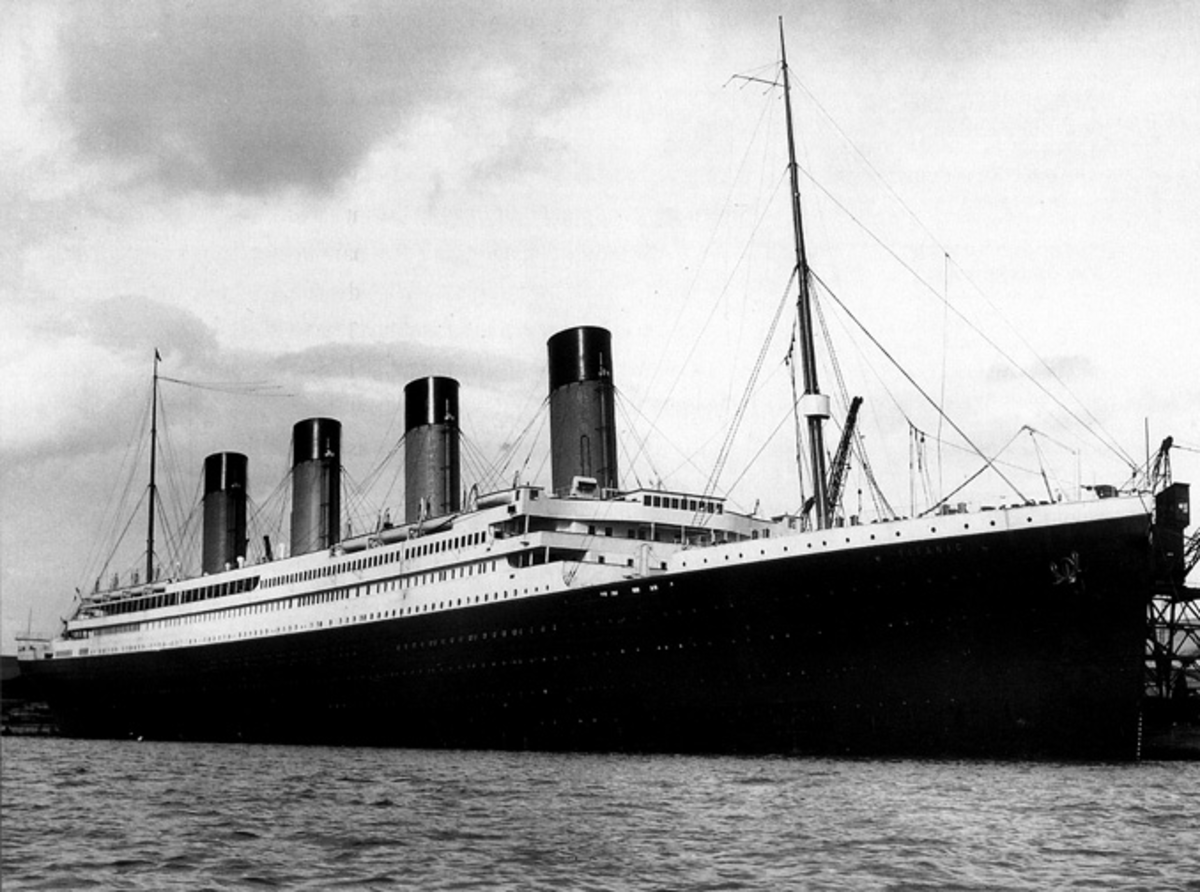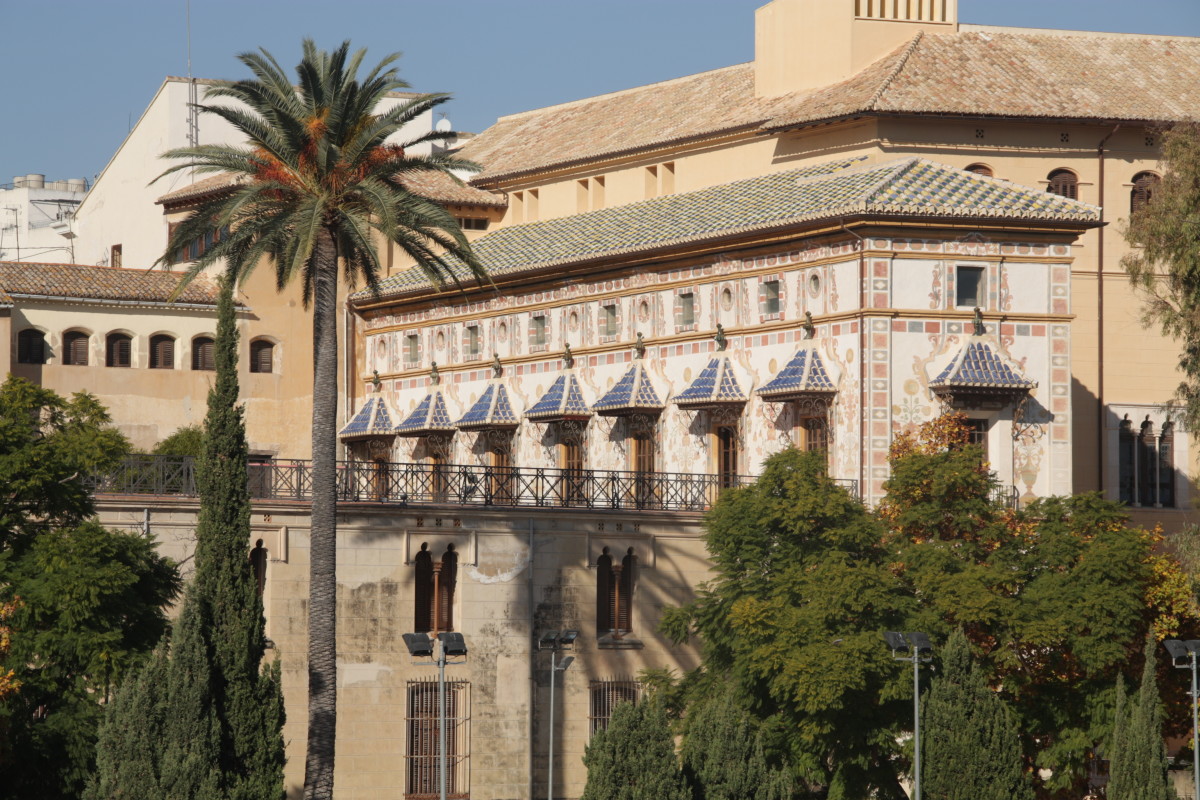The Miraculous Raising of the Liner, "Costa Concordia."
There's no good news for the Concordia, only for Italy

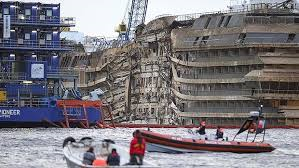
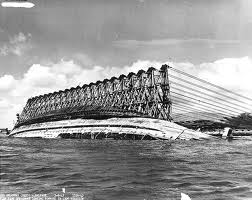
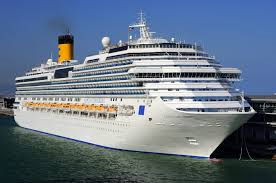
An Unforgettable Feat of Engineering
This writer must add his inadequate but respectful voice into a paen to the many Italian agencies and salvage experts and workers who managed, over less than 24 hours, to raise this half-million ton vessel from its watery grave.
It was an incredible example of salvage engineering, using a principle called Parbuckling, once loved by rum smugglers in the south of England, who used the process to hoist heavy casks of rum from the sea into tiny rowing boats. More on that in a minute.
First, the vessel concerned - the Costa Concordia - was the largest ship ever commisioned at her time of construction:
She was - and her corpse is - 950 feet long with a huge 116 foot beam (width). The behemoth drew 26 plus feet to the bottom of the keel. The liner was capable of more than 20 knots from huge electric/diesel power plants.
Passengers lacked nothing on this floating pleasure-palace from many retaurants and bars to a huge health club and swimming pools. Food and entertainment was available most of the long days and nights.
So successful was the cruise ship from her launch in 2004 until her untimely end last year on January 13, at 9:45 in the evening, that she spawned five other giant liners in her image for the owners, Carnival Cruise Lines: the Costas "Serena, Pacifica, Favlosa, Fascunosa and the Carnival Splendour."
The blame for the sinking of this enormous ship is ascribed to the actions and orders of one man, it's skipper, who is was imprisoned, bailed, and charged with multiple offences, which seems certain to see him becoming jailed for many years and hated for the rest of his life.
He brought his vessel far too close to Isola de Giglio, off Italy's coast 100 NW of Rome; it is said he wanted to impress a family member by parading the Concordia close to his house on the island! This will have to go down as one of the most irresponsible acts of a master seaman, who had the lives of 3229 passengers and 1023 crew members in his hands.
Where were his charts and sonar...what had happened to this experienced seaman's judgement...and, above all, where was his courage!?? (Perhaps even darker reasons may come to light).
Titanic-like, the poor Concordia struck a submerged reef of granite which slit her open like a sardine can for 160 feet!
Continuing his macabre behaviour and paranoid "denial," the Captain - Francisco Schettino - "refused" to order "abandon ship" for a whole hour while the stricken liner took on water, listed to starboard and drifted right onto rocks 55 yards from the island; its power silenced by the incoming sea , and many people already swimming to shore!
Schettino might have been able to recue something of his reputation had he stayed on Concordia and helped rescue his crew and passengers: instead, he abandoned ship ahead of many of his compliment, in the most cowardly way imaginable, an absolutely unforgivable act from a Master of any vessel. The adage, "A Captain goes down with his ship" is the true law of the sea - as the brave captain of Titanic did along with many masters lost at sea through being the last to leave - or drown - on their sinking vessels.
This sad story would have faded into the history of the sea - replete with countless disaster both in war and peacetime - were it not for last night's (16 August, 2013) almost miraculous salvage effort.
The engineering was based on the use of "Parbuckling," the system used by our smugglers mentioned above.
A hundred (my guess) * huge chains were attached to the PORT (left) side of the ship that faced the open sea. These were then passed under the side and keel to mighty winches and cranes on the STARBOARD (right) side facing the land.
As they tightened with thousands of tons tensile strength each, they used leverage inherrent in all pulleys and parbuckling, increasing the effort several times, to lift and twist the ship towards the upright position, onto a prepared bed on the rocks, where she would stay for up to another year. This was done with the ship resting just a few yards from a drop-off into 300 foot depths into which she could easily have slid.
It is also a salute to Italian Social Justice that has made it law for any wrecks to be removed: it took more than 18 months to organize the insurers and shipping company to undertake the salvage...if it had been in Britain, and many other lands, the Concordia might have lain where she sank until she finally rusted away sometime in the next Century! (many wrecks are still visible along Britain's coastline). The salvage operation is said to have cost about half a billion pounds!
During this time, the two missing bodies will be sought, along with millions of pounds in passenger and crew belongings as well as further lifting the ship by means of huge flotation chambers and repairing the hole in her side to make Concordia safe for her final trip to the point where she will be scrapped.
The ship was doomed of course. Any repairs needed will be the minimum to move her to her last resing place.
As dawn today revealed the ship finally upright again, the extent of the damage by her founder onto the unforgiving granite was finally revealed. Nearly one-third of her starboard side was stoven in like a can in a crusher and the once proud vessel was grimy and damaged all over. (Divers had removed and rescued many giant clams which had moved aboard!).
It was clear how grave had been the disaster nearly two years ago when more than 3,000 people had tried to escape the flooding decks with help from many brave crew members, but with the leadership of a coward whose day of justice isn't far hence. If the ship had drifted out to sea and then sunk, the loss of life would undoubtedly be horrendous instead of just 30 with two still missing.
Many websites have more information on the salvage and there are several "live-cam" recordings on video. One can only imagine the unmeasurable forces in play while this ship, half full of seawater. was being slowly lifted. The salvage operators should be amply rewarded by a grateful public in Italy...
* In the event, there were just 36 chains.





